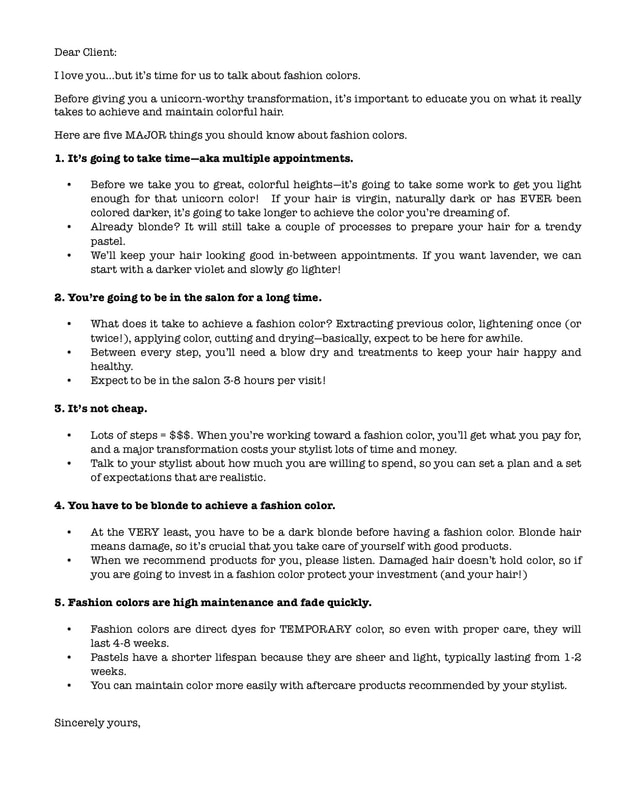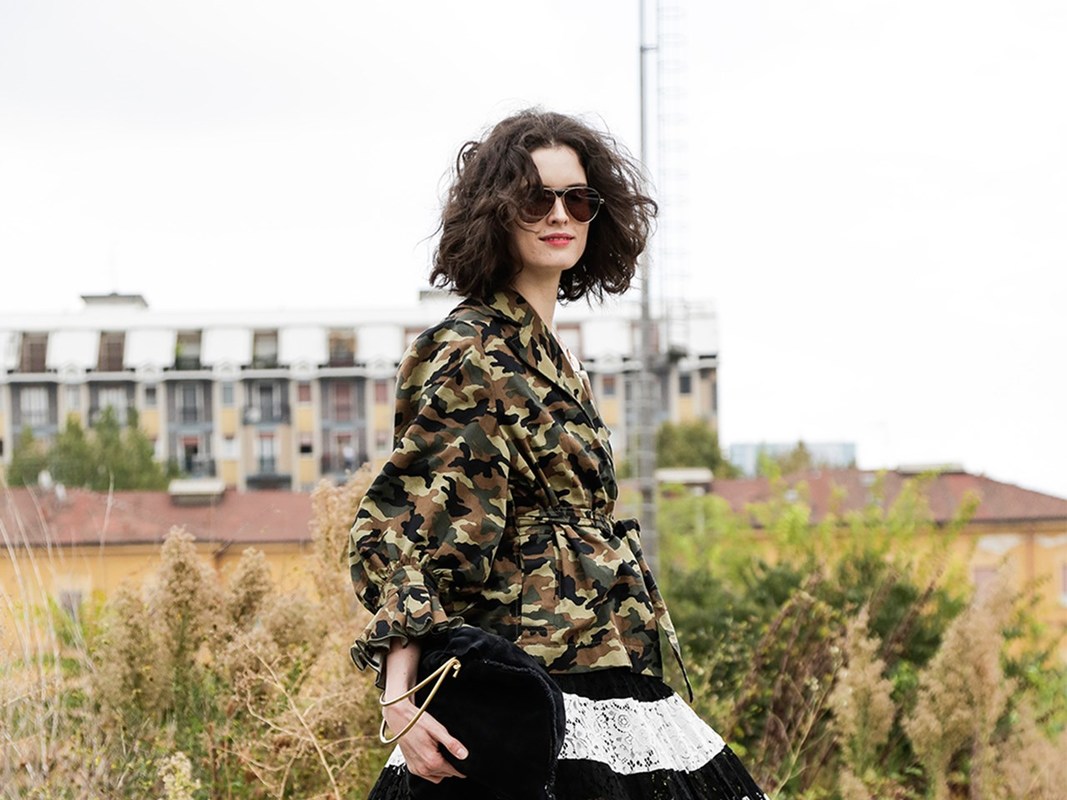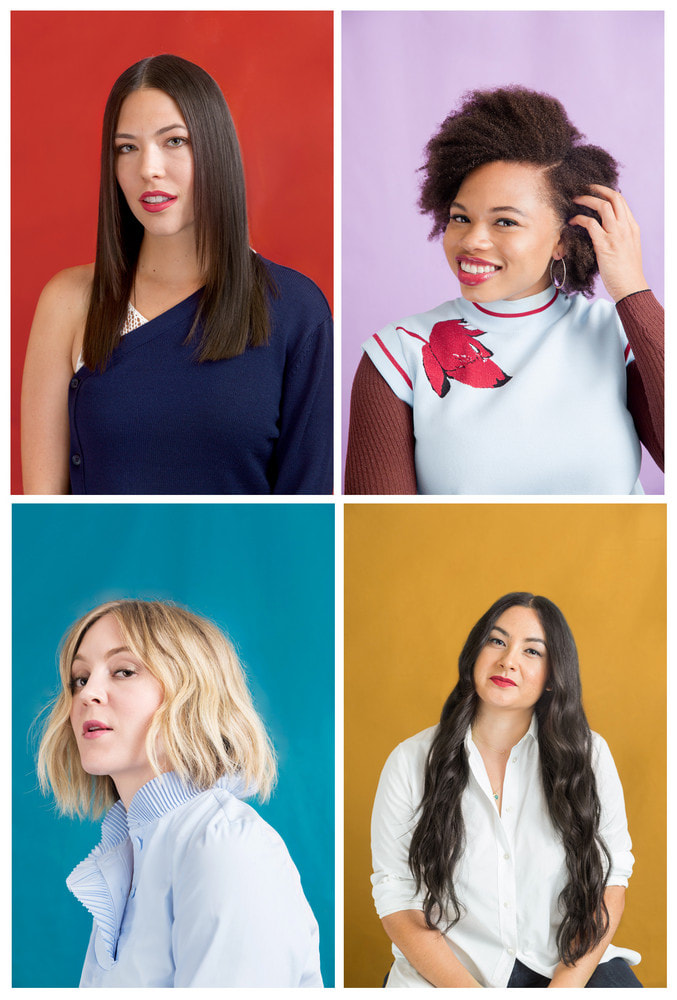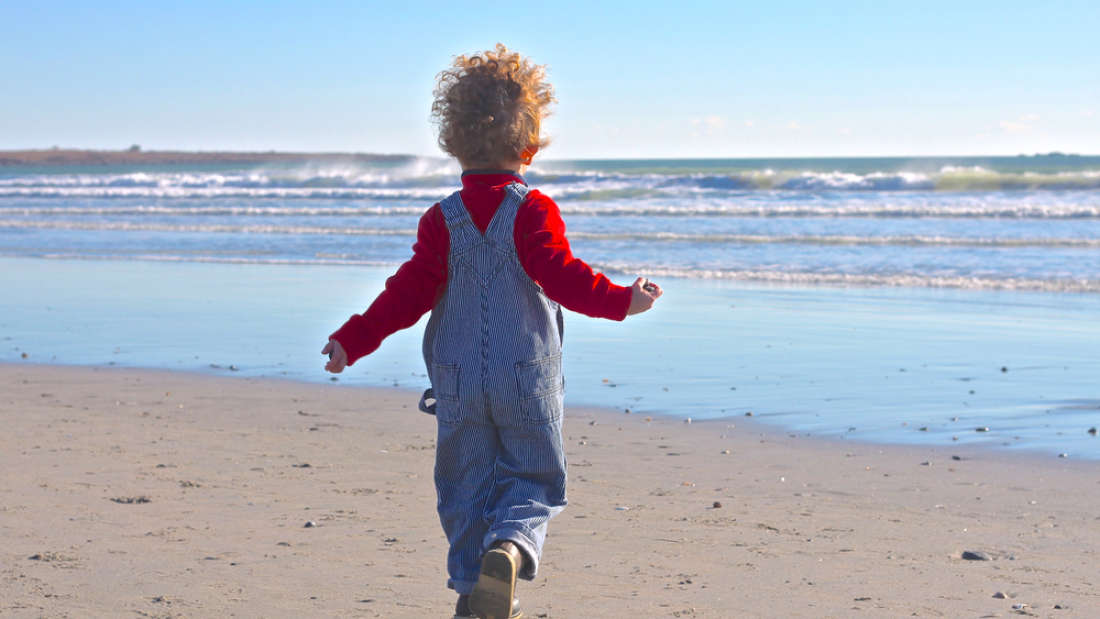|
0 Comments
Whether your hair is long and thick or short and fine, we've got you covered.
Ever read a how-to guide for styling different types of hair and been like, “Uh, yeah, I guess I’m this hair type, uh, I think…?” Well, great news then, we gathered up four Domino editors with different hair types, and consulted the experts at Spoke & Weal salon in New York's Soho neighborhood to investigate all things hair—from texture and type to easy fall styles (that will work year round). We spent an entire day with Jon Reyman, the master hairstylist and founder of Spoke & Weal, while he talked us through the basics, answered all of our questions, and led the looks for each editor. First thing first, what hair type are you? According to Reyman, there are three option: soft/fine, medium, or coarse. Here's how to tell. SOFT HAIR “Soft hair is slippery, it doesn’t hold bend well, although it may be naturally curly. The hair may become greasy quickly, and in many cases it’s more flat and limp," says Reyman. "Soft hair is hard to create volume, too. You can have soft curly hair, or soft straight hair. Lots of people with fine hair are focused on adding volume.” Are you softy at heart? Here are your guides to curling and straightening your hair. MEDIUM HAIR “Medium hair is in-between coarse and soft,” says Reyman. “This hair type may not take a lot of work to style bigger or smaller; it’s flexible and usually easy to work with.” So you’ve got medium hair, that’s great news! Here is your go-to guide. COARSE HAIR “Coarse hair is more rough, dry, fluffy, and most people want to make coarse smaller or softer,” says Reyman. “Coarse hair usually takes longer to blow dry and to style, because hair usually has lots of natural volume.” Coarse hair guide is right here—you’re going to love it. This article first appeared on domino Have you ever wondered why the [insert color here] hair you sported aged 2 was so different from the [insert color here] hair you had at 20? For many of us, our hair naturally turns a darker shade during childhood and adolescence, and it is not at all unusual for a towhead (a flaxen-haired individual) to end up with a mop of dirty blond or light brown hair by the time they reach adulthood.
So, why is this? After all, if your hair is the product of your genetics, you might expect it to stay the same throughout your life. Or until it turns gray, at the very least. Well, it comes down to melanin and exactly how much of it or how little of it we have. Melanin is an umbrella term for the group of pigments that control the natural coloring of our skin, hair, and eyes. There are two specific types of melanin that together determine our natural hair color – eumelanin and pheomelanin. Eumelanin is responsible for how dark your hair is, meaning that people with lots of it tend to have dark brown or black hair. Pheomelanin, on the other hand, affects the warmth of your hair. Redheads, therefore, will have more pheomelanin than their ashy-haired friends. The total amount of melanin and the ratio between eumelanin and pheomelanin is unique to you and entirely determined by your genes. It is what gives you your natural hair color. But this is where it gets interesting. There are several genes that are involved in melanin production and that can, therefore, affect our hair color. These genes switch on and off at different points in our lives – hence the reason our hair changes color as we get older. Usually, our hair will turn darker because eumelanin production increases as we age (until we go gray, that is). And because some genes are not switched on until triggered by the hormones first released during puberty, we might not show our “true” natural hair color until adolescence. Hair is not the only feature to naturally change color as you age – for 10 to 15 percent of people, their eyes do too. This article first appeared on IFLScience! Look at your hair. No, go on – really look at it. Grab a small handful and squint at it, pick out a few individual strands and really peer down at them. Looking a little bit worse for wear? Don’t worry, it happens to the best of us. Lucky we’ve got this handy guide to finding out just how damaged your hair is – and more importantly, how you can nurse it back to health.
Stage One What your hair is like: When you run your hands through your hair, you can feel that the ends are feeling a little bit dry and rough. How it got like this: General wear and tear plays a part – tying it up, taking it down, brushing and even the weather can leave your ends a little parched. Using heat on your hair this can speed up this process. What you can do about it: Try to cut down on the heat, and let your hair air dry sometimes – put it in plaits overnight for beachy waves that are ready by morning. Pick a good conditioner to use on your ends, and let it soak in for a few minutes every time you wash your hair. Stage Two What your hair is like: Look at the ends – are some of the strands split into two, and feeling really quite dry? Yep, you’re hit stage two. How it got like this: You’ve been at the straighteners, haven’t you? Add some haphazard brushing, putting off booking your trim and you’ve got a recipe for hair that isn’t too happy. What you can do about it: Get into the routine of using a hydrating mask to keep your hair moisturised and prevent further breakage. Make sure you schedule regular trips to the salon to keep on top of your ends too. Stage Three What your hair is like: A lot of your ends are split, some more than once, meaning they fan outwards. Some damage has crept up to the mid lengths of your hair. How it got like this: It’s quite likely your hair is coloured or has been a bit fried by heat, leaving it weakened and prone to splitting. What you can do about it: Swap your usual conditioner for a hydrating mask each time – you should start to notice your hair getting stronger within a week or two. Try to air-dry it as much as possible, get split ends treatment in salon, or use a serum to smooth them at home. Stage Four What your hair is like: Each strand looks like a tree, split numerous times in numerous places right up the shaft. It’s feeling very dry and frizzy, and you’re struggling to style it. This hair is not happy at all. How it got like this: We’re guessing you’ve been neglecting your hair – the combination of heat, heavy bleaching or colouring and rigorously styling will destroy the cuticles, making it coarse and untameable. What you can do about it: Speak to your hairdresser and see how much they can salvage, before going for the chop – and remember, it will grow back quicker than you think. Then, learn from your mistakes! Of course we’re not telling you to ditch the colour or never straightener your hair, but try to avoid heat every other day, and make sure you use plenty of conditioning masks to keep it in tip-top condition. This article first appeared on Layered |
Hair by BrianMy name is Brian and I help people confidently take on the world. CategoriesAll Advice Announcement Awards Balayage Barbering Beach Waves Beauty News Book Now Brazilian Treatment Clients Cool Facts COVID 19 Health COVID 19 Update Curlies EGift Card Films Follically Challenged Gossip Grooming Hair Care Haircolor Haircut Hair Facts Hair History Hair Loss Hair Styling Hair Tips Hair Tools Health Health And Safety Healthy Hair Highlights Holidays Humor Mens Hair Men's Long Hair Newsletter Ombre Policies Procedures Press Release Previous Blog Privacy Policy Product Knowledge Product Reviews Promotions Read Your Labels Recommendations Reviews Scalp Health Science Services Smoothing Treatments Social Media Summer Hair Tips Textured Hair Thinning Hair Travel Tips Trending Wellness Womens Hair Archives
June 2025
|
|
Hey...
Your Mom Called! Book today! |
Sunday: 11am-5pm
Monday: 11am-6pm Tuesday: 10am - 6pm Wednesday: 10am - 6pm Thursday: By Appointment Friday: By Appointment Saturday: By Appointment |






 RSS Feed
RSS Feed